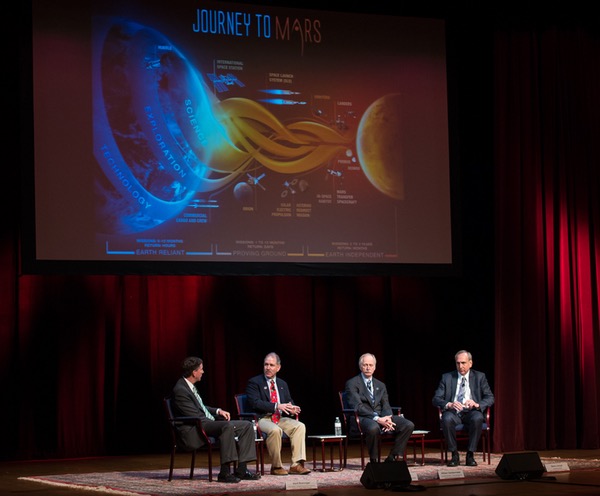Inspirational asphyxiationby Blake Ortner
|
| I grew up hearing we were going to Mars, seeing each new “plan” that never went anywhere. Why should any young person today believe it? |
Few aspects of human endeavor are as challenging as human space exploration. It contains virtually all the makings of a great adventure story: exploration of the unknown, challenging nature, surviving the elements, and solving difficult problems that spring up unexpectedly. But just like a novel, it will be quickly set aside if the story is not compelling. While occasional robotic missions still inspire and draw public attention— millions logged on-line to see the Curiosity rover land on Mars—there has been little in the realm of human spaceflight for an aspiring scientist or engineer in our modern-day culture of instant gratification. When asked, too many young people who once aspired to be astrophysicists or aerospace engineers say that they are pursuing other professions because it took too long to see results with the space program. They have lost faith that we will ever achieve our goals. After all, experts have said that Mars is only 20 years in the future for the last 40 to 50 years.
I grew up hearing we were going to Mars, seeing each new “plan” that never went anywhere. Why should any young person today believe it? NASA has recently embraced human missions to Mars more than ever, but without a formal program or necessary funding, these ambitions still don’t seem real. While some progress is being made on the Orion spacecraft and Space Launch System (SLS) rocket that are supposed to help take us to Mars, the pathway to Mars is still too fuzzy and the time period too long to convince many young people that it will ever happen. Even NASA admits that the next eight years will be used primarily just to test Orion and SLS.
We do have an unprecedented opportunity, however. Space exploration is still seen as an opportunity to inspire the young to pursue careers in science, technology, engineering, and math (STEM) while making America more technologically competitive in the world. There exists consistent bipartisan support for human spaceflight, which brings together the multitude of fields that solve problems in space while also providing direct impacts on Earth in the form of many technological spinoffs.
The rest of the world is catching up with the United States, though, and we may wake up one day soon to find ourselves in second place. We need to inspire our young to seize the future and dream of what can be, not what could have been. As you plan your future, will you be more inspired to build a more efficient car engine or more comfortable chair, or would you rather want to build a vehicle that enables astronauts to explore the wonders of Mars while searching for evidence of past or present microbial life just beneath the surface of that alien world? For me, the latter holds far more inspiration, as long as I don’t have to wait 20 years to do it.
